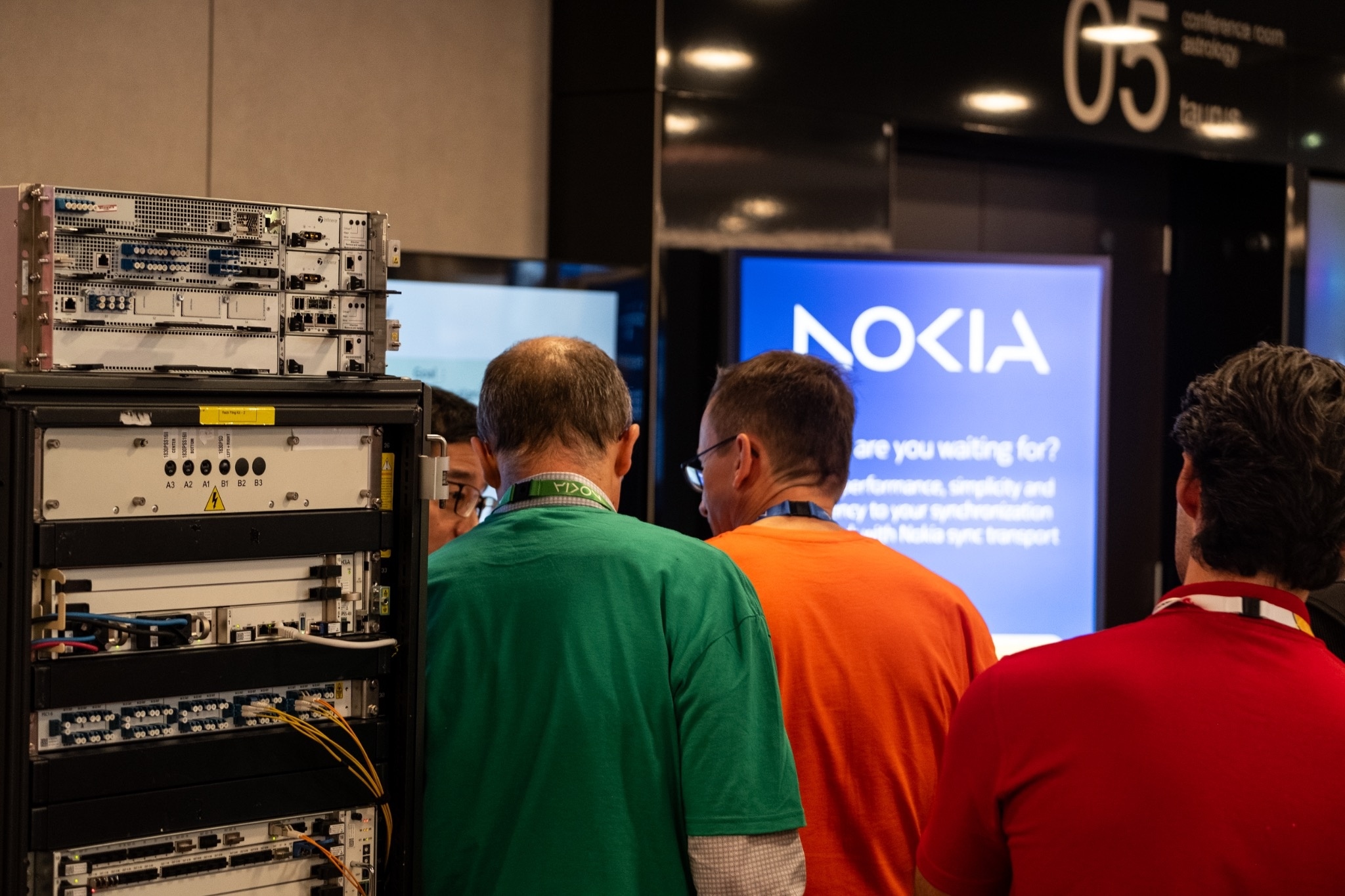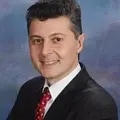Syncing up at ITSF 2025

The International Timing and Sync Forum, aka ITSF, is always one of the event highlights of the year for me and my colleagues who focus on network synchronization. It’s a well-organized event with a great community, a very focused agenda with deep technical discussions, and it’s always held in premier destinations. This year’s conference took place last week in Prague.
The Nokia team had a significant presence at ITSF this year, with multiple speaking/poster slots and a booth with live demos of both our 1830 PSS and 1830 GX optical transport solutions. Both use optical timing channel (OTC)-based approaches to deliver leading performance and functionality. The 1830 PSS OTC implementation is focused on robust large-scale core-to-edge sync networks, where cost-effective clock integration, sync manageability and operations and quick integration of new timing standards are key. The 1830 GX OTC implementation focuses on a core network timing-cloud architecture, where high-performance boundary clocks, coupled with a long-haul focused OTC, preserve critical timing budget for metro and edge networks.
With three days of detailed discussions covering nearly every aspect of sync and timing, the breadth of sync-related content covered at the conference was vast. In this blog I’ll focus on four topics that we as a Nokia team were focused on.
A long way to go with understanding of sync over DWDM challenges
This is a topic we’ve discussed numerous times at ITSF in the past. But with increasing numbers of network operators looking at sync over DWDM as an option to reduce reliance on highly-vulnerable global network satellite systems (GNSS) such as GPS or Galileo, and with an increased number of new attendees at ITSF, it isn’t surprising that as an industry there’s still work to do to get this message across to those who need to hear it. Simply put, almost everything we do in DWDM networks to increase service speeds, spectral efficiency or network reach adds asymmetry, which creates a real challenge for sync and timing.
Thomas Hiestand, Systems Architect at Nokia, gave a presentation outlining testing results of running PTP timing over various DWDM transponders and discussed the issues these present when sync transport is required over a DWDM network. The results showed that end-to-end sync in-band, directly over DWDM traffic, gives considerable timing error and is very unlikely to work in real-world deployments. To combat this, many DWDM vendors implement OTC-based solutions that use an OTC dedicated to out-of-band sync traffic, bypassing those troublesome OTN and DWDM components that are sources of asymmetry. But as with many things in life, not all OTC implementations are equal. Thomas’ final conclusion to the question of sync over these transponders was “it depends”. If the right OTC implementation is used in core and regional networks, then there could be enough timing margin left to support sync directly over these transponders at the edge of a network, perhaps in older legacy access networks. But you need the right end-to-end sync strategy and the right OTC-based implementation in the rest of the network for this to be possible.
All things in life aren’t equal – you need to test, test and test again
I just mentioned that OTC implementations aren’t equal in many ways, and these small differences can have a big impact on overall OTC performance and capabilities. Likewise, conformance to critical timing standards isn’t always equal, which can also impact sync performance across a network. A good example of this, is the specification the industry uses for telecom boundary clocks (T-BC) and telecom time synchronous clocks (T-TSC) deployed in networks with full timing support – ITU-T G.8273.2.
This specification defines class A, B, C and D clocks with increasingly tight specifications. Class D clocks have generally been such high precision that the only parameter generally considered in G.8273.2 compliance statements and testing is time error noise generation. François Maurice, Synchronization Systems Engineer at Nokia and Editor of the ITU-T G.8275.1 recommendation, and Billy Marshall, Senior Applications Engineer at Calnex, gave a joint presentation discussing the importance of testing the broader range of ITU-T G.8273.2 parameters. They concluded that poorly designed and validated T-BC clocks can exhibit noise transfer within a network, even though they are compliant to the time error noise generation specification. Testing all parameters is vital at all stages of T-BC development and compliance testing. Network operators looking to validate vendor compliance should also consider specifically asking for compliance to all parameters, rather than a simple yes/no to ITU-T G.8273.2 support.
You can learn more about this topic here
Once you’ve got sync distribution right, can you further monetize the network?
Getting sync distribution over DWDM transport networks right can be a challenge, but it’s totally possible with the right solution. Nokia has deployed tens of thousands of sync cards in DWDM networks across the globe, supporting network operators with sync and timing distribution to support mobile networks and other mission-critical, sync-dependent applications. Building large sync networks that span from the core of the network right to the cell sites at the edge of the network requires high-performance, resiliency, and excellent operations, administration and maintenance (OAM) capabilities. Once these are in place with sync being delivered across a national network, what else could this investment be used for?
Stéphan Roullot, Product Line Management Director at Nokia, presented Nokia’s strategy for enabling network operators to further monetize their network infrastructure through the addition of sync-as-a-service (SyncaaS) capabilities. SyncaaS is a concept that has been discussed for many years, but without the right standardization of the service definitions and the ability to manage and operate large sync transport networks, these discussions were largely hypothetical. Stéphan outlined the work Nokia is undertaking within the standards world, alongside multiple major network operators, to bring this reality to life. SyncaaS could very soon be the next logical step for many network operators once they have built their own robust sync distribution networks.
New applications for sync transport

ITSF is an excellent forum for the discussion of sync challenges and applications, the industry should work towards to resolve these challenges. A good example is the concept of cnPRTC, or coherent network Primary Reference Timing Clock (PRTC). Initially, this term can be slightly confusing for those of us from the optical networking industry, as the term “coherent” in this context is totally different to coherent used in coherent modulation adopted in transmission optics. Here cnPRTC refers to the concept of connecting, or federating, multiple independent timing domains into a single larger resilient timing domain with very high performance. A key element of this architecture is high-accuracy timing transfer (HA-TT), which requires sub-nanosecond sync performance over hundreds of kilometres. To achieve this, we need to focus entirely on sync and build sync only transport, without additional DWDM traffic on the fiber. I presented a poster outlining the latest advances Nokia is making in HA-TT development using standard DWDM components to deliver the required nanosecond level performance.
All in all, ITSF was another great event. Record-breaking numbers for attendees and sponsoring companies show the growing level of interest in this very specialised area within our industry, and it was great to see the high level of interaction from across Nokia at the event. Next year we move on to Geneva, hope to see you there!




